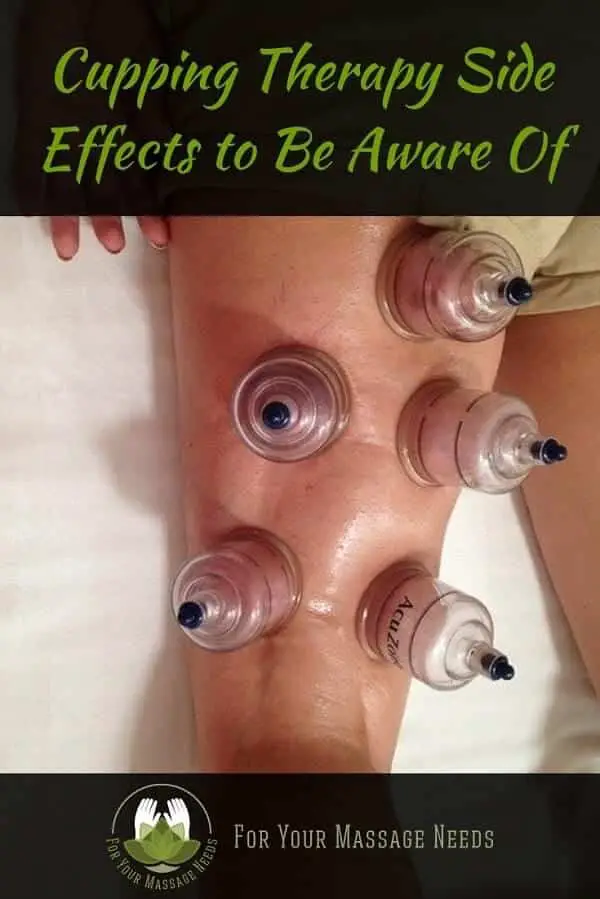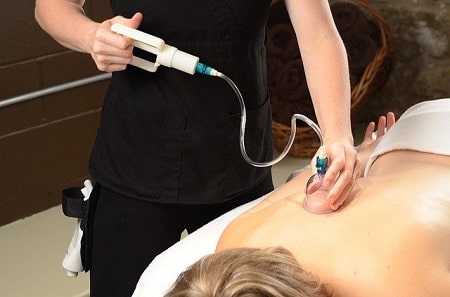As with any form of therapy or alternative treatment you should always make yourself well aware of any possible side effects.
The good news is there aren’t many cupping therapy side effects to be concerned about. Especially when you consider all the benefits associated with cupping, making it an easy choice for most people.
Contents
What Is Cupping Therapy?
Cupping therapy is a form of therapy that dates back thousands of years. It involves positioning plastic cups on the patient’s skin and using a vacuum to create suction and draw stagnant blood to the surface of the skin.
There are various ways this can be performed, and a few different types of cupping. The most common types of cupping are:
Types of Cupping Therapy
Dry Cupping – This is the most popular method. Plastic or glass cups are heated up then applied to the skin, as they cool it creates a vacuum effect.
Wet Cupping – Also known as Hijama, wet cupping involves using the cups to draw blood from you after making a small incision.
Fire Cupping – The technique for fire cupping uses a flame inside the cup to withdraw the oxygen and cause the vacuum effect.
Needle Cupping – This is a combination of acupuncture and cupping. Needles will be used as part of an acupuncture session, with the cup being placed over the top.
Cupping Therapy Side Effects
There are very few cupping therapy side effects to be concerned about. However, some people may experience one or more of the following after having a cupping therapy session:
Pain and Discomfort
As with massage therapy, with cupping there is pressure applied to your skin. Typically between 4-10 plastic cups will be positioned on your skin.
A vacuum effect then draws the stagnant blood to the surface near your skin. Some will find this more painful than others, and likewise some people will feel sensitive for days while others will barely notice.
Burns
There is a risk of burning as the cups are warmed up to generate the vacuum effect. Fire cupping also uses heat to draw the oxygen from the cups and can potentially burn the patient.
Skin Infections
It’s possible that you may have a bad reaction to the therapy and develop a skin condition as a result. Particularly with wet cupping as small incisions are made in the skin.
Allergic Reactions
There is always a risk of allergic reactions if you’ve never had a certain form of therapy before. There are various brands of cups and the other materials a therapist will use, so it’s hard to say exactly what materials you’ll be coming into contact with.
Precautions and Safety When Cupping
Some safety precautions to be aware of:
- Only have cupping therapy from qualified practitioners. It’s a skilled form of therapy and if you see it in a general spa without any proof of the therapist being qualified in this for of therapy I’d pass on it.
- Listen to your body. If you are in a great deal of pain speak up and tell the therapist as it shouldn’t be very painful. It’s intense at first, but you should be able to relax once the treatment is under way.
- Make sure you’re comfortable with both the therapist and the room you’re being treated in. Everything should be clean and well maintained to minimize the risk of infection.
- Make the therapist aware of any injuries you have, no matter how important you think it is. You should have a consultation before the treatment when you’ll be asked about any medication or injuries.
- Always check with your regular doctor or health professional before going ahead with a cupping therapy session for clearance.

I’m a MA, (CMT) Certified Massage Therapist, Licensed Massage Therapist (LMT), and Reiki Master — I’m a licensed massage therapist with over 10 years of experience in the industry.



I have read many articles on this in the one thing I do not see is the emotional side effects from fire cupping or possible emotional side effects. Would be interesting to know how others have reacted. I know what I have seen and felt. Would be interesting to hear others.